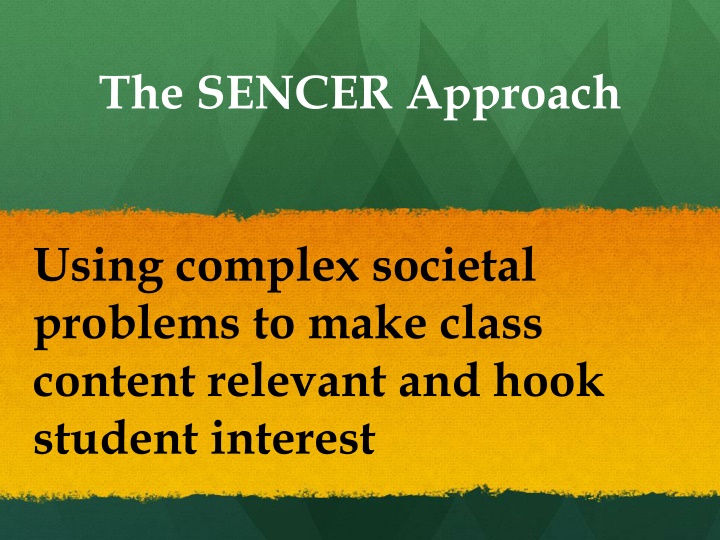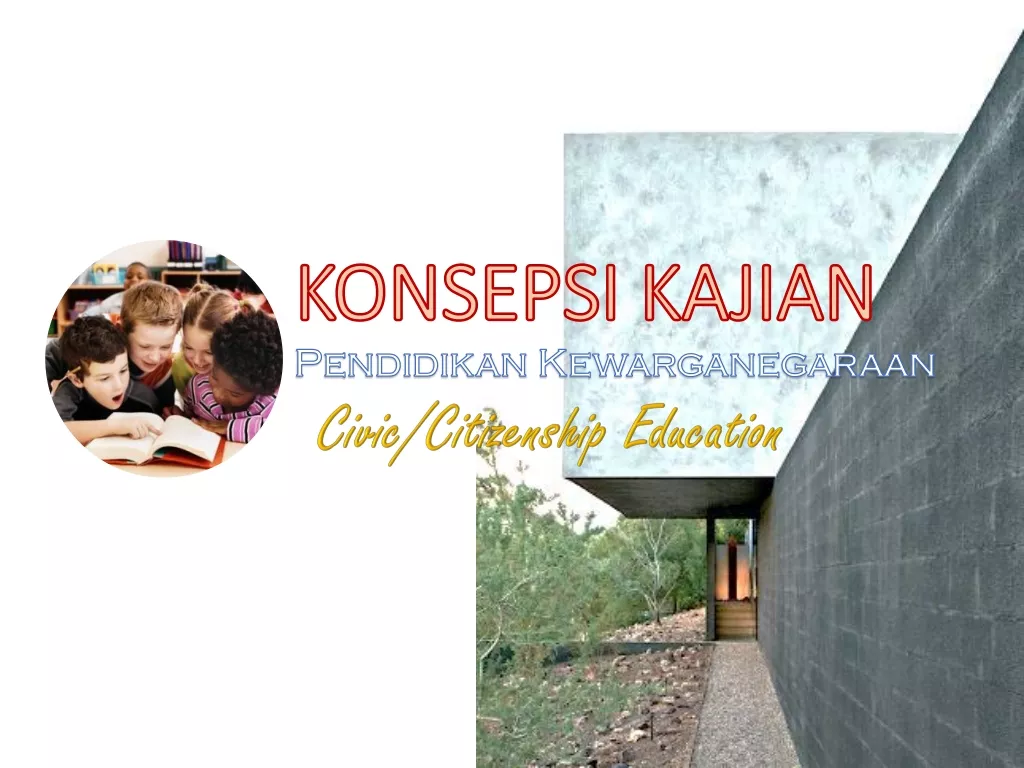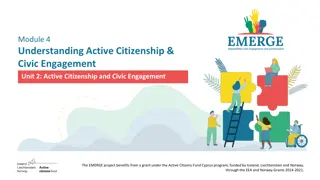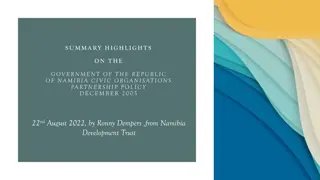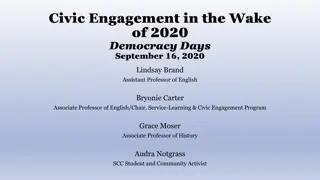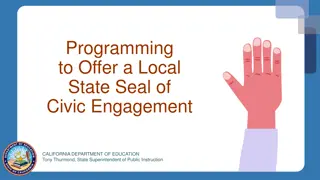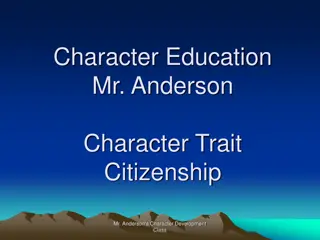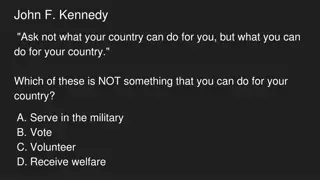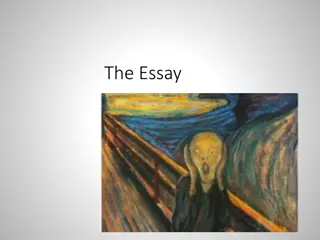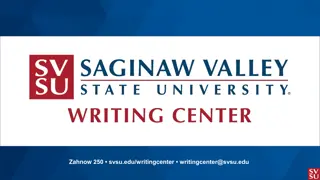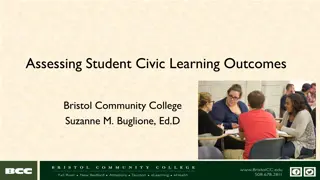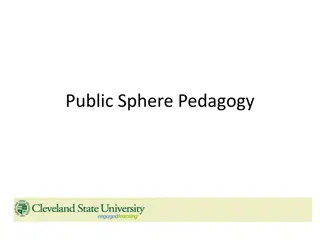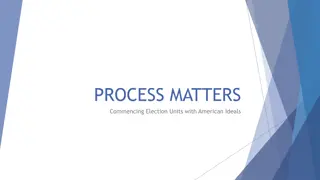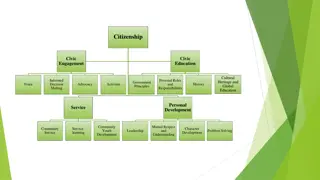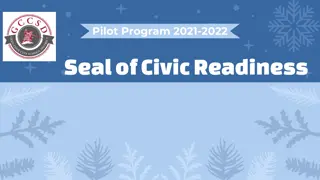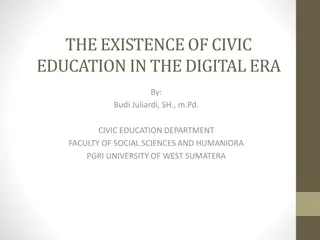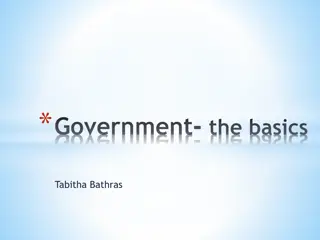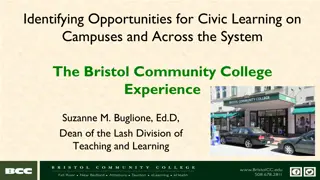Engaging Students with the SENCER Approach in Teaching Complex Civic Problems
Explore the innovative SENCER approach, which utilizes societal problems to engage students in multidisciplinary learning, fostering civic engagement. Learn how to design courses that relate to students' communities, develop critical thinking, and address pressing public challenges.
Download Presentation

Please find below an Image/Link to download the presentation.
The content on the website is provided AS IS for your information and personal use only. It may not be sold, licensed, or shared on other websites without obtaining consent from the author.If you encounter any issues during the download, it is possible that the publisher has removed the file from their server.
You are allowed to download the files provided on this website for personal or commercial use, subject to the condition that they are used lawfully. All files are the property of their respective owners.
The content on the website is provided AS IS for your information and personal use only. It may not be sold, licensed, or shared on other websites without obtaining consent from the author.
E N D
Presentation Transcript
The SENCER Approach Using complex societal problems to make class content relevant and hook student interest
Acknowledgments From a Science Education for New Civic Engagements and Responsibilities (SENCER) workshop by Eliza Reilly, Director of National Center for Science for Science and Civic Engagement (NCSCE) Established in 2001 with funding by the National Science Foundation, SENCER seeks to develop an active curiosity and deeper understanding of both the efficacy and limitations of science and mathematics in dealing with our most pressing public challenges.
Learning Outcomes Students will be able to: Use the SENCER approach to design courses that foster civic engagement by teaching through multidisciplinary, complex, civic issues that are of immediate relevance to students and their communities.
Some Examples SENCER MODELS Over 55 in every discipline and institutional type
Brainstorm Possible Topics If you had the opportunity to teach about a complex civic problem, which might intrigue you AND your students, what would you choose? Put EACH of your ideas on a separate sticky note. Be sure to write large enough for others to read. DON T comment on each other s ideas now. Consider issues that you think are important for all students to engage with and try not to be constrained by your own expertise in identifying these themes.
Choose your audience and choose one theme to develop Decide on one theme/civic issue that you will develop as your SENCER model. If you are working in a team, come to consensus on a topic. decide on your target audience (e.g., first-year, developmental, non-science majors, majors, k-12 students, community members etc.) What other factors must you consider to ensure your course/program supports and engages all learners.
Identify Learning Outcomes Given an imaginary course, module, or exhibit that will focus on your theme, brainstorm and settle on 3-4 primary learning outcomes, (knowledge, skills, dispositions) that you want your learners to achieve. Beyond the STEM knowledge, what humanistic or meta- knowledge and skills will you aim for?
Identify Resources Brainstorm a list of the following that might contribute expertise/activities/materials to help students engage in the theme : courses, disciplines, people: faculty members, staff members, undergraduate preceptors, external/internal experts, and community assets and resources.
Implementation- Delivering the Content Think of field experiences, literature (of various types), films, dramatic performances, research projects, and novel teaching methods that might ACTIVELY engage students in the theme (don t let limited budgets constrain your ideas). Put EACH idea on a separate sticky note to later arrange them for the poster.
Assignments and activities that give students practice in applying knowledge, skills and dispositions. What kind of assignments or activity will give your students practice in the skills, capacities, and applications you have identified as your learning goals? What assignments will give them a chance to demonstrate their learning? Posters, performances, group projects, exhibitions, podcasts, videos, debates, re-enactments, interviews, game design just some of the assignments SENCER faculty have used.
Build your course, program, or module Use a poster-sized sheet or whiteboard to lay out your design. Make sure to include at least some of the following: a title that portrays your theme, the target audience, learning outcomes, basic course content, activities, resources, assignments, and assessments.
Share your work! Choose a person to present your work to.
Reflect How do these courses compare to ones you ve taken/taught before What impact do you think it will have on students? On you?
Wednesday On Wednesday, we will go through this same process but individually, with the class you are designing in this course. Think about themes that would work for that material.
